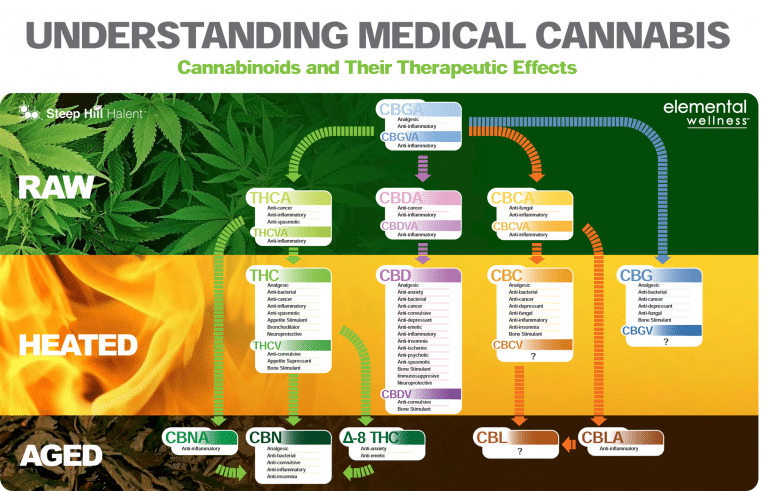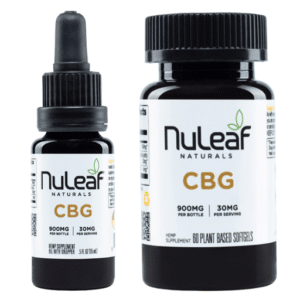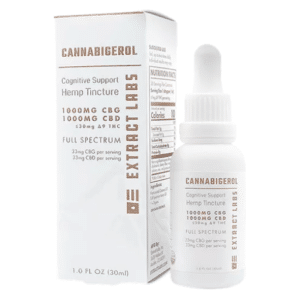When it comes to hemp-based wellness products, CBD (cannabidiol) has gotten most of the attention for the last couple of years. But there’s now a new kid on the block. Another cannabinoid, CBG, has been creating a buzz because of its unique therapeutic properties and potential benefits.
This has led many CBD users to become interested in CBG products. The purpose of this article is to explain what CBG oil is and how you can incorporate it into your wellness regimen.
What is CBG Oil?
CBG (short for cannabigerol) is one of at least 113 unique chemical compounds that are naturally-occurring in cannabis plants. The most well-known compounds are called cannabinoids. The major cannabinoids produced by the cannabis plant include CBD, THC, CBC, CBN and CBG.
Since it’s also a cannabinoid, you might think that CBG is a “cousin” of CBD. They come from the same plant so they’re certainly related. But a better description of CBG is that it is the “mother”, “precursor” or “stem cell” of all the other cannabinoids. That is, all cannabinoids evolve from the raw version of CBG.
The conversion chart below shows how this process occurs. CBG-A (cannabigerolic acid) is the raw version of CBG. It’s the only cannabinoid present in young cannabis plants. Over time, natural enzymes in the plant break down the CBG-A into the raw acidic forms of THC (tetrahydrocannabinolic acid), CBD (cannabidiolic acid) and CBC (cannabichromenic acid).
When heated through a process called decarboxylation, the raw versions of these cannabinoids convert into their regular form. These activated cannabinoids are the ones that are dominant in cannabis products such as CBD oil.

How is CBG Grown and Extracted?
This is where things get a little tricky with CBG. While it’s the only cannabinoid in the young plant, most of the CBG-A converts through the natural process into either CBD or THC. That’s because most of the hemp grown to make CBD products goes through a full growth cycle. The goal is typically to maximize the amount of CBD while keeping levels of THC below 0.3%. The THC levels must be less than 0.3% to be legally classified as derived from hemp.
By the time that the hemp plant matures and is fully grown, the natural CBG content is usually 1% or less. This is why most full spectrum CBD products have very low levels of CBG shown on their third-party lab reports. The low levels of CBG in traditional industrial hemp means that a lot more hemp would be needed to create high CBG products.
Fortunately for those seeking high CBG products, the growing and extraction methods of hemp farmers are continuing to evolve. By harvesting the plants earlier in the growth cycle, much higher levels of CBG can be achieved. As the interest in CBG products continues to increase, it’s likely that we’ll see even more advancements in efficiently extracting CBG from the hemp plant.
What's the Difference Between CBG and CBD?
CBG and CBD are alike in many ways. They both interact with the human body’s endocannabinoid system and your cannabinoid receptors to promote homeostatis or a general sense of well-being. Neither of them are psychoactive cannabinoids. So they won’t get you high or have the intoxicating effects that are commonly associated with THC. In fact, both CBG and CBD are known to counteract the psychoactive effects of THC.
The main difference between them is the unique therapeutic benefits that each compound possesses. They share many of the same analgesic, anti-bacterial and anti-inflammatory properties. But based on anecdotal evidence from users and limited research studies, CBG may be more effective than CBD for some concerns.
What are the Potential CBG Benefits?
Based on what we’re hearing from users, CBG products can be especially useful for sleep and insomnia, cognitive and focus issues, and to help relieve inflammation. As is true with all cannabis products, CBG products have different therapeutic effects on different people and you will have to some experimentation of your own.
Based on the anecdotal feedback, CBG may be something to try if traditional CBD products alone aren’t giving you all of the health benefits that you are seeking.
What Does the Research Say?
Medical studies into the effects of CBG and other cannabinoids have been limited to date. We expect more cannabinoid research in the coming years now that hemp is officially legal in the U.S. In the meantime, the clinical research into CBG is limited to studies performed on mice. While these studies certainly don’t imply they will have the same results for humans, they may help spur further research.
Inflammatory bowel disease -CBG was shown to reduce inflammation associated with colitis in mice in this 2013 study. The study suggested that “CBG could be considered for clinical experimentation in IBD patients.”
Appetite stimulant – in a 2016 study, CBG was shown to stimulate the appetites of rats. It concluded that investigation of the therapeutic potential of CBG for cachexia and other eating disorders is warranted.
Huntington’s Disease – CBG was shown to be “extremely active” as a neuroprotectant in mice. The 2015 study suggested that CBG should be researched further for the treatment of neurodegenerative disease such as Huntington’s Disease.
Colon cancer – a 2014 study found that CBG slowed the colon cancer cell growth in mice and recommended more research.
Are There Any Potential Side Effects?
More research is needed to fully understand what, if any, side effects may be associated with CBG. Based on the information available and feedback from users, CBG is just as safe as CBD. Like CBD, mild side effects such as headaches or nausea are generally caused by taking too much. If you experience any of these or a general worsening of symptoms after starting to take CBG oil, it’s typically recommended that you reduce the amount that you’re taking.
If you’re taking prescription medications, you should check with your doctor before using any CBD or CBG product. This is especially true if you are taking a prescription drug that is metabolized by the liver or has a grapefruit warning on the label. It’s still not known if CBG is metabolized the same way as CBD. But it’s definitely better to err on the side of caution when it comes to potential drug interactions.
CBG Oil Dosage Tips
There are no official dosage guidelines for CBG just as there aren’t any for CBD. The optimal dosage for everyone is different and it often takes some experimentation to find the amount that will work best for you.
Based on user feedback, the most important thing is to start low and increase slowly over time until you find your personal “sweet spot” dose. If you’re taking CBG in addition to other CBD products, you’ll want to be mindful of the combined amount of cannabinoids that you’re consuming.
How To Take CBG
If you’re currently using a full spectrum CBD oil, then you’re likely already getting some CBG. But for the reasons explained above, the levels will be low. You can check the amount of CBG in your current product by looking at the cannabinoid profile of its third-party lab report.
If you’re interested in adding a higher concentration of CBG to your regimen, you have a couple of options.
Get a full spectrum product with higher levels of CBG. These products can be harder to find than regular CBD oils. But several safe and reputable brands are now starting to offer them. Before buying a product, be sure to check the third-party lab reports and ingredients list to make sure that it’s a good fit for what you are looking for.
Use CBG isolate powder as an additive. CBG isolate is typically 99%+ pure so a little will go a long way. You can add it in small amounts to your current CBD product, make your own tincture or mix it into your coffee or smoothie. If you’re going to add it to a beverage, it’s best for it to be something that includes milk or another fat-soluble substance for the best absorption rates.
What are the Best CBG Products?
There isn’t a single brand that will be the “best” for everyone. Finding the CBG product and the amount that you should take for optimal results will likely require some experimentation and patience.
Given the growing popularity of CBG-dominant products, we expect that consumers will have more choices in the near future. When choosing a supplier, it’s important to choose a reputable brand that makes third-party lab reports easily accessible on their website.
CBDOilUsers.com is reader-supported. If you make a purchase using links on this page, we may earn a commission at no extra cost to you. Learn more.
NuLeaf Naturals

20% off with code CBDOILUSERS at checkout
Full spectrum CBG tinctures (60 mg/ml) and gelcaps (15mg per capsule). Available in 300mg, 900mg or 1800mg of total CBG.
Free shipping on all U.S. orders of $74 or more. Also ships internationally to most countries except Canada.
Extract Labs

25% off with code CBDOILUSERS at checkout
Full spectrum and broad spectrum (THC free) CBG oils with a 1:1 ratio of CBG to CBD. Also offers CBG isolate powder.
Free U.S. shipping on orders over $75. Also ships internationally.
Lazarus Naturals

20% off code ONETIME20 or 5% off code CBDOILUSERS
Full spectrum tincture with 25mg of CBD and 25mg of CBG per milliliter. Also offers a THC-free CBG tincture and isolate powder.
90-day money back guarantee and free U.S. shipping on orders over $50.
CBDistillery

25% off with code CBDOILUSERS at checkout
Full spectrum CBG oil with a 1:1 ratio of CBG to CBD. Also offers CBG isolate powder.
60-day money back guarantee and free shipping on U.S. orders over $75.


One Response
This is one of the best overviews of CBG/CBD that I’ve found and the graphic is awesome! Thanks much..
Dr Jonathan Dugger